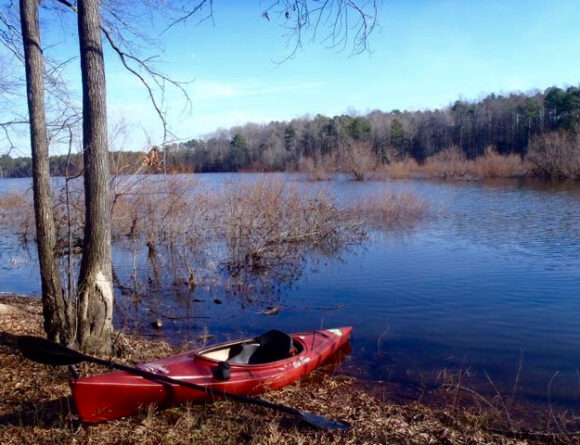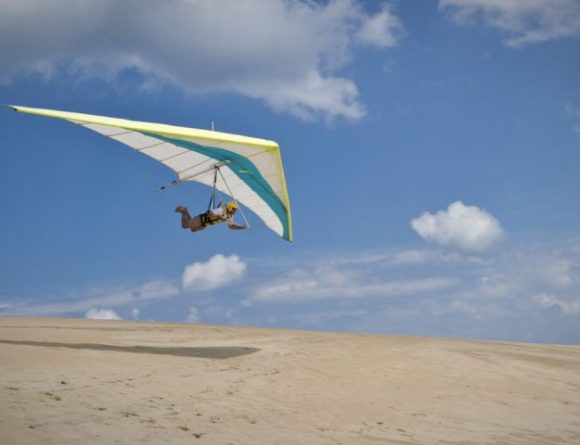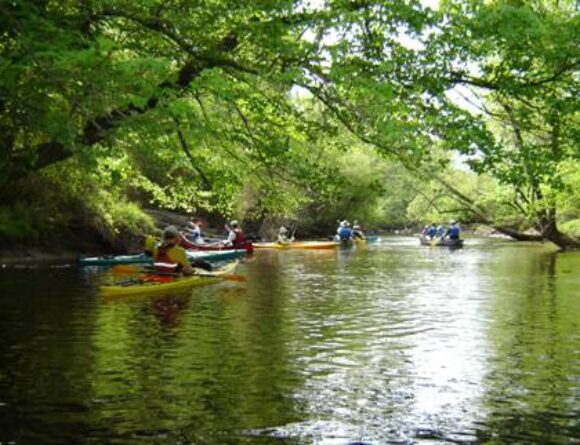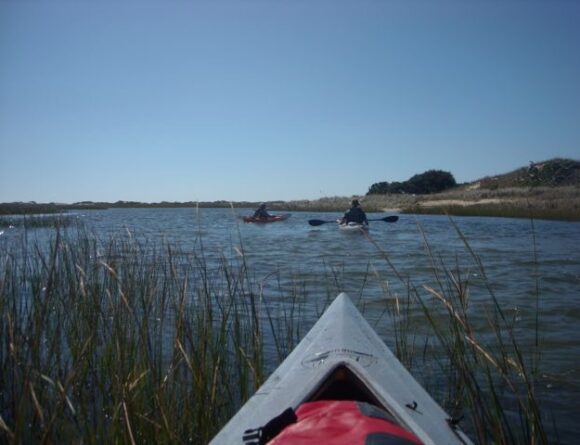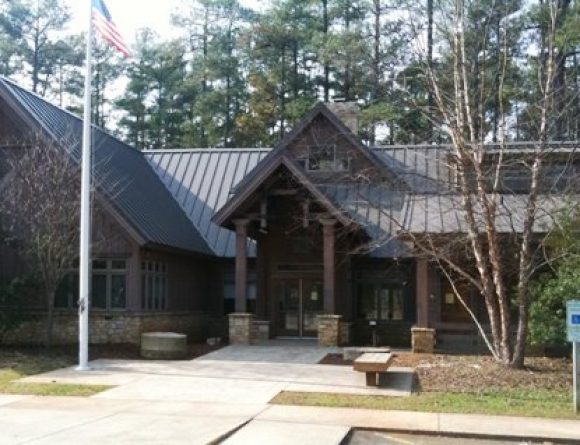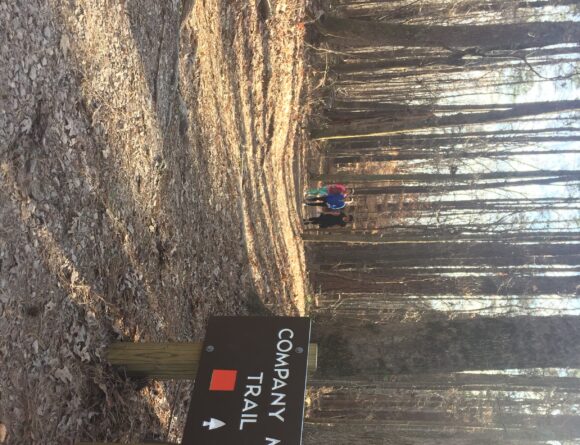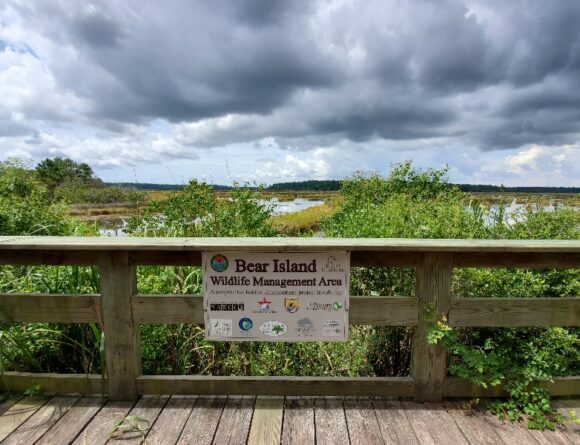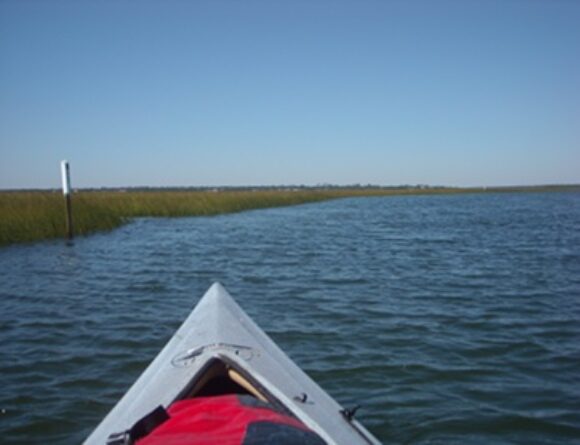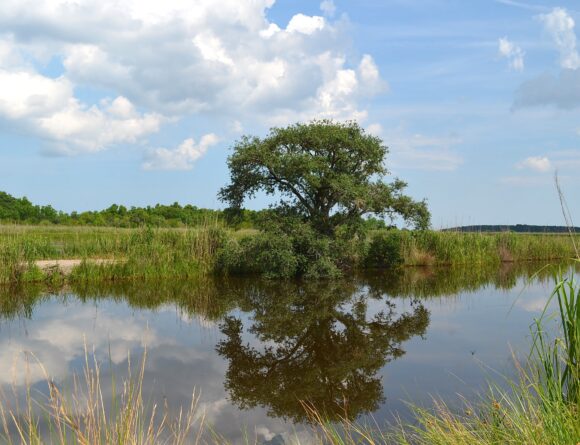Bear Island, located in Onslow County, can be reached by ferry, kayak, canoe, and at one point– pirate ship! This park has a story to tell. The best way to learn about it is by seeing it yourself! A well-trafficked area in the summer seasons, but a treasure year round!
The paddle to Bear Island is a good one year round. What makes it especially good is that it’s the only way to get to the island. After an easy 2-mile paddle through a shallow, relatively protected marsh on a well-marked canoe trail, this three-mile-long barrier island awaits. Walk the lonely beach front, devoid of the sun worshippers and picnickers who will soon descend. Note that this all ends once Hammocks Beach State Park fires up its ferry service for the season. This season is on a limited bases beginning April 1, full-time, seven days a week from Memorial Day through Labor Day. Until then, you’ll be so enchanted you won’t want to leave — and you needn’t thanks to the island’s 14 campsites.
Look forward to therapeutic walks along the sandy shore (categorized as a 4-mile hiking trail). The intriguing task of shelling is literally at your feet. Rumor has it, the winter season has the best stock of shells. The earlier in the day, the better variety in store. Remain entertained by testing your luck for some puppy drum, trout, or flounder when you bring a fishing rod. In the warmer months, you my find yourself taking a dip in the salty waters around. Keep your eyes peeled for the various bird species soaring around the island. If you’re lucky, you may spot from a distance Loggerhead and Green Sea turtles coming to nest. Black bears have even been reported along the shore and in the forest. Despite the original name, Bare Island, due to lack of vegetation– there sure is a lot to see!
The scenes you’ll encounter are as rich as the history behind it. It was first inhabited by Neusiok and Coree Indians, later frequented by pirates like Blackbeard, eventually served as military grounds during the Civil War and World War II, purchased by a retired neurosurgeon, eventually donated to the NCTA who then donated it to the State to develop as a park open to minorities and eventually integrated following the Civil Rights Act. This beach has seen a lot of history.
Expert Picks
Leah BradleyThe Garden Island pants are a staple in my wardrobe. They bring comfort and style together, making it super easy to dress up or down for any occasion. They soften after every wash which is one of the many reasons I love anything from Patagonia’s hemp collection. Oh, and they have pockets!
Wilmington
Allison MaddoxI was looking for a sandal that I could wear not only with pants and shorts but with skirts and dresses. The overall smaller look of the Mayari is a little dressier with the toe loop and crisscross straps. The contoured footbed means I can wear them all day in comfort. Very adjustable and took very little time to mold to my foot. 5 stars!
Charlottesville
Scott WoodPrior to the advent of the Ankle Deck Boot, there was always a choice ahead of every fishing trip in a small boat – wet feet or heavy, knee high rubber boots. These 6″ boots don’t slip on the deck, keep my feet dry when the weather gets snotty and are so light and easy to take on and off that I find myself wearing them around town on rainy days.
Raleigh
Laura CooperThe Cotopaxi Allpa Travel Pack is my go-to bag from weekend getaways to overseas adventures. The zipper compartments provide the perfect amount of organization, and the hip belt is comfortable while walking through airports or cobblestone streets… once you travel without a roller bag once you’ll never look back!
Raleigh
Drew WilliamsThe 360 Fusion seat is a game changer! Being able to cast at any angle and turn around to manage gear is amazing. And even with a 4 years old behind and a 2 year old in front it paddled just fine.
Charlottesville
Chuck MillsapsThe Rumpl Orginal Puffy ranks among the most versatile pieces of gear on our camping shelf. It remains a “go to” for bike trips (packs really well in the panier) paddle trips (easy shoreline comfort) and car camping where it is often envied by others and ultimately shared to those who feel the chill after sun sets. Super easy wash and care.
Raleigh
Stacy MurphyThis Outdoor Everyday Rain jacket is the perfect blend of a classic look with modern fabrics. I LOVE the look and feel of this completely waterproof jacket. I highly recommend this piece for anyone wanting a more casual style to go with any outfit.
Raleigh
Swain LewisThe Men’s Light Cushion Crew Sock from Smartwool is my year-round go-to sock! Whether it’s 10 degrees or 100 degrees, it always keeps my feet free from cold, sweat and friction commonly causing blisters. They stay in place and fit the same whether i just put them on or I’m about to take them off.
Winston-Salem
Eric ShreenanEagle Creek’s Pack-it Isolate Compression Cubes kept me organized on my latest excursion overseas, allowing me to fit everything comfortably into my carry-on. They’re perfect for keeping clean and dirty laundry contained and took the frustration out of what can be a stressful element of travel.
Raleigh
Rudy HaydenI own 2 of these. They are super durable at a reasonable cost. Clear top to see what you are going after and it opens from both sides. Being a multi-sport adventurer, I love having different bins for different disciplines. I keep one in my truck for go-to often used items.
Charlotte
Chase ChristiansonI’ve become a lifelong fan of just about any Smith sunglass I’ve put my hands on. As long as the Guide’s Choice fit on your head, there isn’t a better fishing sunglass you could find. The color correction, tapered lenses, and clarity help me spot fish faster than anything else I’ve ever tried.
Virginia Beach
Bittu AliWith 22 lbs. of floatation, my immediate thought was the Indus would feel bulkier than the excellent GreenJacket. I could not have been more wrong. The secret sauce to the supremely flexible fit is Astral’s FoamTectonics (sliding foam plates). I can’t think of a downside to choosing the Indus as your go-to Class V WW/Rescue/Big Water PFD.
Raleigh
Stefka CoccarelliThe Front Range Harness is a great everyday harness for any dog owner. I love that it has two points of contact for a leash–one on the back, and one on the front (great for those dogs that tend to pull a little bit more). It’s also super quick to put on, which let’s you and your dog get out the door even faster to explore the world outside!
Raleigh
Stacy MurphyNOCS are the best binoculars for the money! Totally waterproof, great optics, and fun colors! The 8×32 Field Issue is the best option for bird watching. It is small enough to travel with, yet big enough for a variety of activities. NOCS also offers accessories such as colorful straps which I also recommend.
Raleigh
Rudy HaydenHaving paddled most of the kayaks we carry, the Lynx is the most fun. I can easily fish off of it and take it to many bodies of water. I see it as a super versatile, very capable vessel. It is super efficient, very comfortable and very easy to load and transport.
Charlotte
Leah BradleyDon’t let the size fool you, this bag can hold a lot! I love taking mine when I travel because it packs so easily, lets you be hands-free, and is perfect for any itinerary. It’s great for a light hike, travel, or simply using it as a daily purse.
Wilmington
Chuck MillsapsIf you were to ask my washing machine, “What is Chuck’s favorite T-Shirt?” The response, quicker than the express spin cycle, The “Patagonia Cap Cool Daily Graphic” – Fancy name but simple performance that handles whatever I throw at it. And it laundries well too! “Daily” is the operative word for how often I might wear it.
Raleigh
Travis ZarinsThis polo is a staple in my closet year-round. I think of it as a wonderful “T-shirt with a collar”. This is a perfect shirt in warmer months or worn under a pullover in cooler months. A professional look that’s as comfortable as your favorite tee!
Raleigh
Amie ScottI love these shoes. I use them everytime I go kayaking. They are lightweight, allow my feet to have flexibility in my boat, dry quickly, and are machine washable. I have them in 3 different colors!
Chapel Hill
Evan ShaferThe Fishpond Nomad Net Series is an awesome range of durable, high quality nets ready for any trip, whether it be to your neighborhood pond chasing bass and carp or out to your favorite trout stream. They are sure to carry any size fish you can fit in them!
Charlottesville
Jackson HeinsSurprisingly warm for how thin it is. Great for running in cold weather and the chest pocket is very convenient for holding my phone.
Greenville
Maddie La CountI use this backpack for school, so it’s a great bag to fit all of your necessities. It works as a carry on, for hiking, and daily use. It has a couple of hidden compartments that come in handy for your laptop and keys. This bag also comes in a lot of sick colors. I definitely recommend it as an on-the-go backpack.
Wilmington
Ethan SongThe Olukai Ohana are my favorite sandal to wear when I’m not barefoot. The footbed is amazingly comfortable and so is the toe post. I never used to love sandals because it’d be uncomfortable between my toes or be too hard under my foot, but the Ohanas come together to work for me perfectly.
Chapel Hill




























